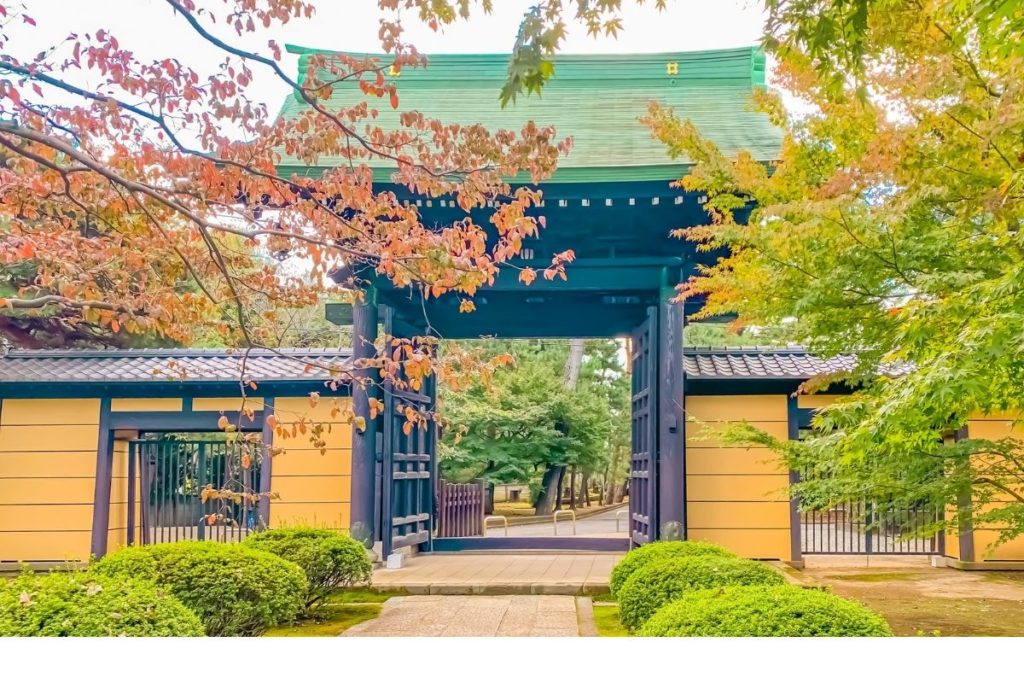Gotokuji Temple, often referred to as the ‘Lucky Cat Temple,’ is a revered Buddhist site nestled in the Setagaya ward of Tokyo. Famous for its association with the ‘Maneki-Neko’ or ‘Lucky Cat’ figurines, the temple offers a unique blend of spiritual serenity and cultural charm. This tranquil haven is a spiritual site and a cultural landmark that captivates visitors with its historical significance and picturesque beauty, especially during the spring bloom.
Table of Contents
What is the story of the Gotokuji Temple?
The origin of Gotokuji Temple is deeply rooted in Japan’s feudal history. It became prominent in the 17th century under the Hikone clan, particularly during the lordship of Naotaka Ii.
According to legend, Lord Naotaka was saved from a thunderstorm by seeking shelter in the temple, guided by a beckoning cat. This incident led to the temple’s close association with the ‘Lucky Cat’ symbol, believed to bring good fortune and prosperity.
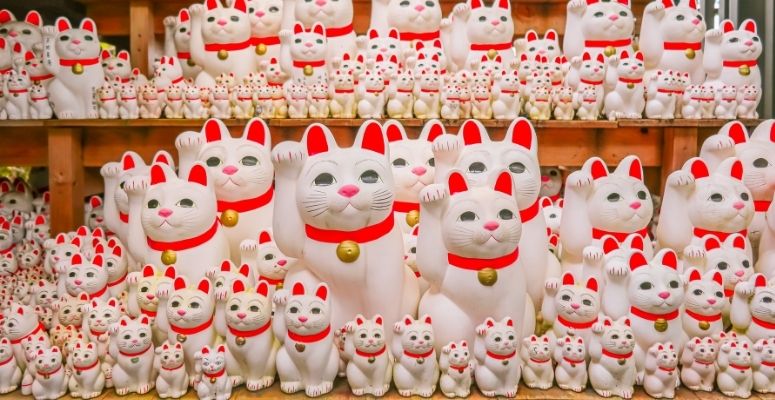
The temple was initially established as a gesture of gratitude and to honor the Ii family’s ancestors. Over the centuries, Gotokuji has transformed from a private ancestral temple into a public worship site, intertwining the local community’s spiritual practices with the broader narrative of Japanese Buddhism.
The temple’s architecture and layout reflect the typical style of the Edo period, with various buildings within the compound, each serving distinct purposes, from worship to meditation. The temple’s enduring charm and historical relevance make it a significant destination for devotees and history enthusiasts.
What to see at Gotokuji?
Gotokuji Temple is a tranquility and beauty sanctuary stretching over 50,000 square meters. This serene sanctuary is adorned with a variety of flora, including the lofty elegance of cherry, plum, and maple trees, complemented by the vibrant blooms of azaleas, hydrangeas, and peonies. Together, they create a picturesque and cooling haven, offering a much-needed respite from Tokyo’s hot summer days.
The chirping of birds and the variety of blooming flowers enhance this picturesque environment, inviting visitors to immerse themselves in Japan’s natural splendor and the rich heritage of the Edo Period.
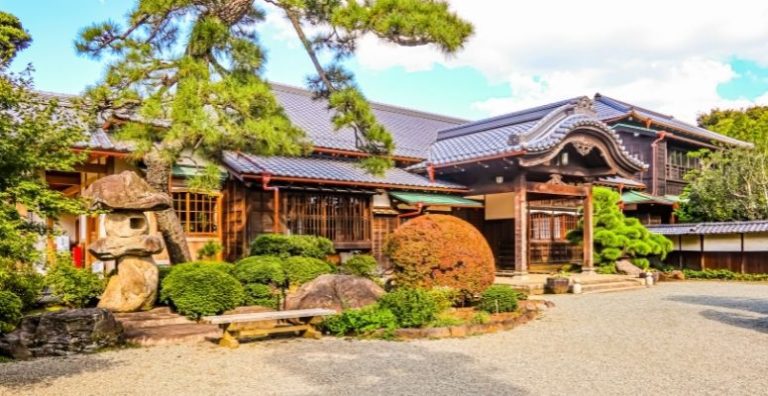
More than just a peaceful retreat, Gotokuji Temple is renowned for its ‘Lucky Cat’ figurines. This unique attraction sets it apart from other temples, such as the bustling Asakusa Sensoji. The temple grounds are steeped in history, housing a cemetery that reflects the deep roots of Japanese Buddhist culture. Visitors can explore the Lucky Cat corner, admire the grandeur of a three-tiered pagoda, and browse through a special store for Lucky Cat souvenirs.
Other notable features include a historic 17th-century bell, elegant stone lanterns, the Jizo hall, and the Ii family tombs. The tranquil Shugetsuen garden further contributes to the temple’s peaceful and culturally rich atmosphere, making visiting Gotokuji a truly unique experience.
Main Entrance:
The entrance to Gotokuji Temple offers a glimpse into the intricate beauty and architectural heritage of the site. From a distance, the main gate appears deceptively simple. However, upon closer inspection, its true magnificence is revealed. Intricately carved in wood, this gate is a fine example of Edo-style architecture, showcasing the detailed craftsmanship typical of the period.
As visitors approach, they can admire the elaborate wooden carvings beneath the gate, each detail contributing to its grandeur. This craftsmanship is not just superficial; even from the outside, after passing through the gate, the complexity and artistry of the design are clearly evident, leaving visitors in awe.
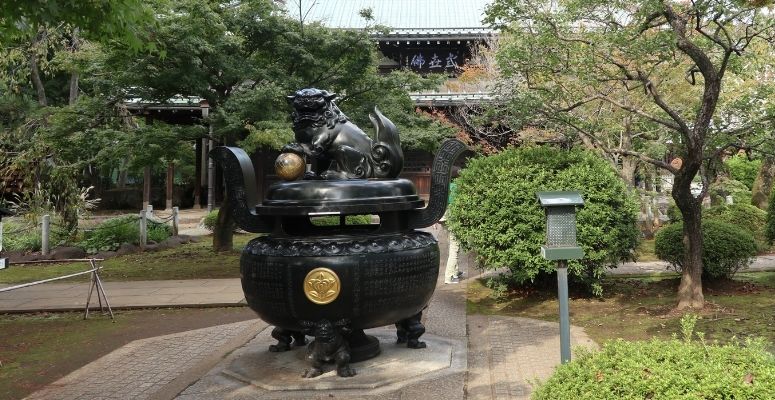
Adding to this majestic entrance, a large black statue stands prominently at the front, enhancing the temple’s mystical aura. To the left of this imposing figure, the three-tiered pagoda, another architectural marvel of the temple, can be seen, further accentuating the historical and cultural significance of Gotokuji Temple.
Three-tiered pagoda:
The Gotokuji Temple’s three-tiered pagoda is a notable feature for its distinctive architecture. Although it’s relatively small, its significant height makes it impossible to miss.
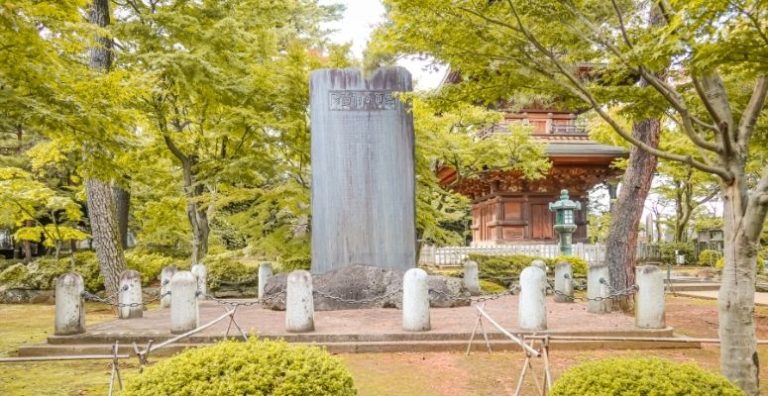
This temple is not just an architectural marvel but also a symbol of the temple’s rich heritage, with each tier representing a layer of spiritual significance.
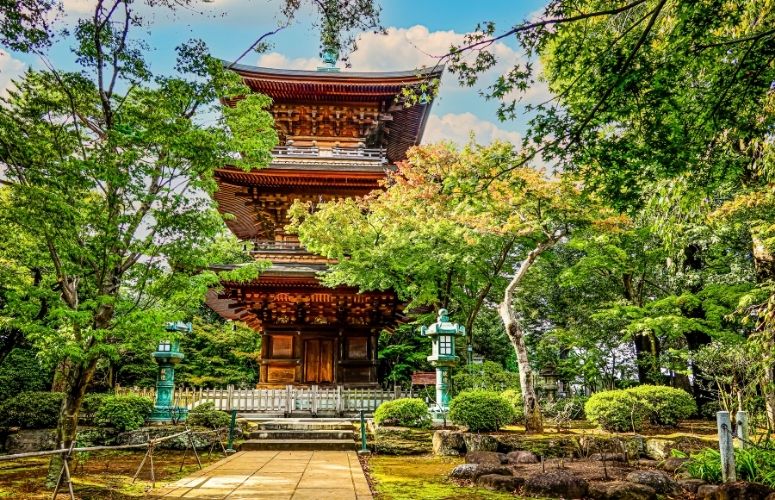
One of the most photographed attractions at Gotokuji, the pagoda’s intricate wooden carvings capture the attention of every visitor. It’s situated right in front of the YAKUSHI-DŌ, known as the Lucky Cat figurine corner, adding to the temple’s picturesque and culturally rich atmosphere.
Cat figurine corner:
At Gotokuji Temple, right after the impressive three-tiered pagoda, you’ll find the charming Lucky Cat Corner. This special area, which has been part of the temple since 1691, is filled with hundreds of adorable ‘Maneki-Neko’ or Lucky Cat figurines. Each cat, with its red ears and ribbons, is unique and symbolizes the wishes that have come true for those who visited the temple.
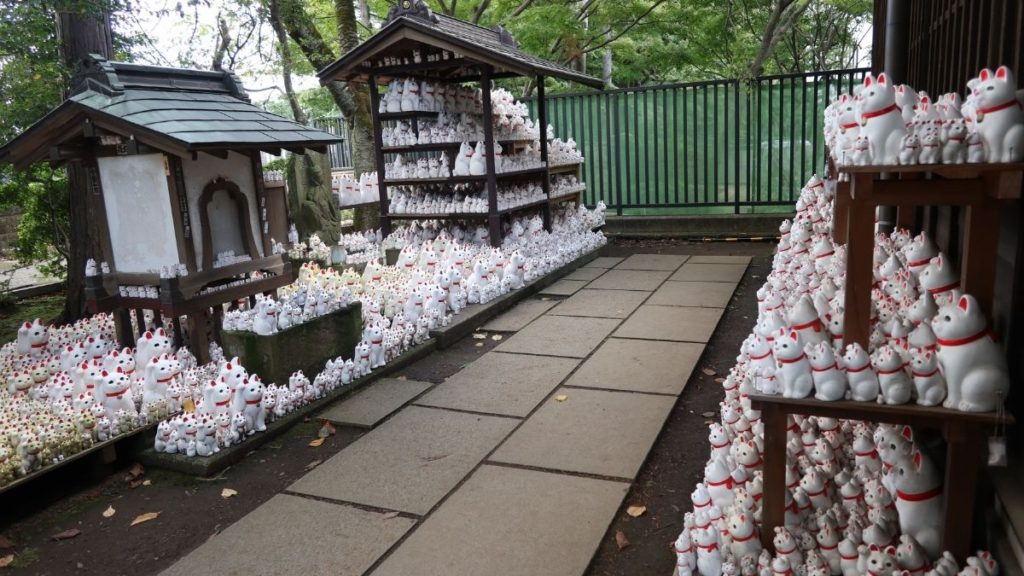
In this corner, there’s also a peaceful Buddha statue among the cats, blending the symbol of good fortune with spiritual calm. This Buddha and Lucky Cats mix showcases the temple’s blend of faith and cultural traditions. At the YAKUSHI-DŌ gate entrance, you’ll also see many wooden charms, each representing prayers and hopes, adding to the temple’s welcoming and spiritual feel.
A big cemetery:
Gotokuji Temple is home to a large, historically significant cemetery just past the YAKUSHI-DO gate. This peaceful resting place is divided into three sections by a small path. Here, you’ll find important monuments, including a milestone engraved in the Japanese alphabet, marking the tombs of the Ii Naotaka family, key figures in the temple’s history.

Ii Naotaka, known for establishing the Lucky Cat deity at Gotokuji, dedicated this cemetery to his family. His deep respect for the Lucky Cat is evident throughout the temple grounds. Notably, the cemetery houses a large Buddha statue and includes the tomb of Ii Naosuke, a prominent daimyo, and signatory of the Harris Treaty with the United States. Visiting this cemetery offers a profound insight into Japanese history and the temple’s past.
Main Temple:
Near Gotokuji Temple’s cemetery, opposite the three-tiered pagoda, is the main hall, a large building traditional to Japanese temple architecture. The front door is usually closed, but small windows can be opened to look inside, where devotees pray and sometimes offer money.
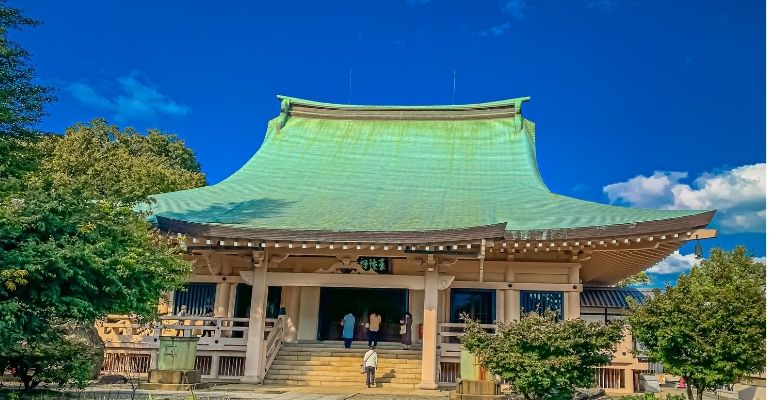
Next to the main hall, there’s a store selling Lucky Cat figurines in various sizes and prices. Convenient for international visitors, this store accepts different kinds of credit cards, making it easy to buy these popular souvenirs.
Big Bell:
The Gotokuji Temple features a unique bell tower, a rare sight in modern pagodas and a highlight for many visitors. This bell tower is a nod to ancient Buddhist traditions. In the past, before the era of mobile phones, the giant bell served as a crucial means of communication, its resonant sound reaching far to convey messages and mark time.

The bell also played a vital role in temple functions and festivals. Today, Gotokuji’s bell tower, situated near the main entrance, continues to fascinate visitors with its historical significance and the impressive sound it can produce, keeping alive a cherished piece of Buddhist tradition.
Gotokuji Temple gift shop:
At Gotokuji Temple in Setagaya, Tokyo, visitors can buy ‘Good Luck’ cat figurines and special wooden charms for good luck. Beautiful views surround the temple, which is the most famous in Setagaya. The staff here are very friendly, making it a welcoming place to visit. The temple is known for its unique cat figurines and popular souvenirs for tourists.
Moreover, it is better to mention here that there are some kinds of cat figurines, such as
- Right paw raised – attracts money
- Left paw raised – attracts customers
- Both paws raised – attracts both customers and wealth
Not only raising paws but also colors have a different meaning. But white cats are most famous at Gotokuji.
- White – good luck and future
- Red – sound health
- Black – evil or bad luck
- Pink – good relationships
At Gotokuji Temple, apart from the popular Lucky Cat figurines, visitors also have the option to buy wooden charms, known as omikuji, which are believed to bring good fortune. The temple staff are always ready to help visitors understand these Japanese good luck charms. If a charm indicates good luck, visitors can keep it with them as a token of fortune.
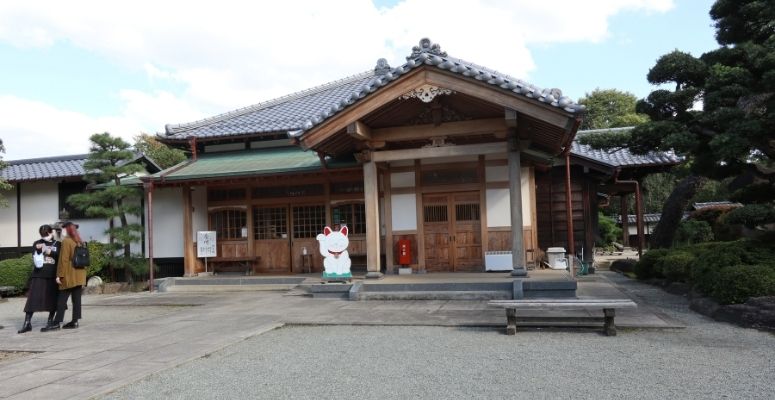
There’s no need to worry if someone draws a charm with bad luck. Tradition at Gotokuji allows visitors to hang these charms at a designated spot within the temple, symbolizing the leaving behind of bad luck and inviting positive energy instead.
Now you know what Luck Cat is. You’re probably wondering how much the cat is in the Gotokuji Temple.
At Gotokuji Temple’s store, small cat figurines cost about 300 yen, and the largest ones, which are life-size, cost around 5000 yen. But remember, the size of the Maneki-Neko doesn’t affect the luck it brings, so you don’t need to spend a lot to get a lucky cat!
Is it worth going to Gotokuji Temple?
Visiting the Gotokuji Temple in Tokyo can be a worthwhile experience, especially if you are interested in Japanese culture, history, or spiritual traditions. Here are a few reasons why it might be worth the visit:
- Cultural Significance: The Gotokuji Temple is famously known as the ‘Lucky Cat Temple’ and is considered the birthplace of the Maneki-Neko. This beckoning cat figurine is a popular symbol of good luck in Japan. This makes it a unique cultural landmark.
- Peaceful Atmosphere: Gotokuji offers a more tranquil and serene environment, allowing for a soothing experience.
- Architectural Beauty: The temple features traditional Japanese Buddhist architecture, including a pagoda and a beautiful garden, which are visually appealing and provide a glimpse into Japanese design and aesthetics.
- Photographic Opportunities: The temple, with its array of Lucky Cat figurines and beautiful structures, offers great opportunities for photography.
- Local Experience: Gotokuji is located in Setagaya, a district not typically overrun by tourists, offering a more authentic and local Tokyo experience.
- Spiritual Aspect: For those interested in spirituality, it provides a space for reflection and learning more about Buddhist practices in Japan.
Whether Gotokuji Temple is worth visiting depends on your interests and what you hope to get out of your Tokyo experience. If you’re intrigued by unique cultural sites and enjoy quieter, less touristy spots, then Gotokuji Temple could be a delightful addition to your itinerary.
Things to do near Gotokuji Temple:
Just a stone’s throw from Gotokuji Temple, the Setagaya Ward of Tokyo offers a quaint glimpse into local life with its charming streets and unique shops. Visitors can explore other serene temples and shrines, like Shoin-Jinja Shrine and Saisho-ji Temple. Setagaya Park is perfect for a relaxing day with its green spaces and playgrounds, while the Carrot Tower provides panoramic city views.
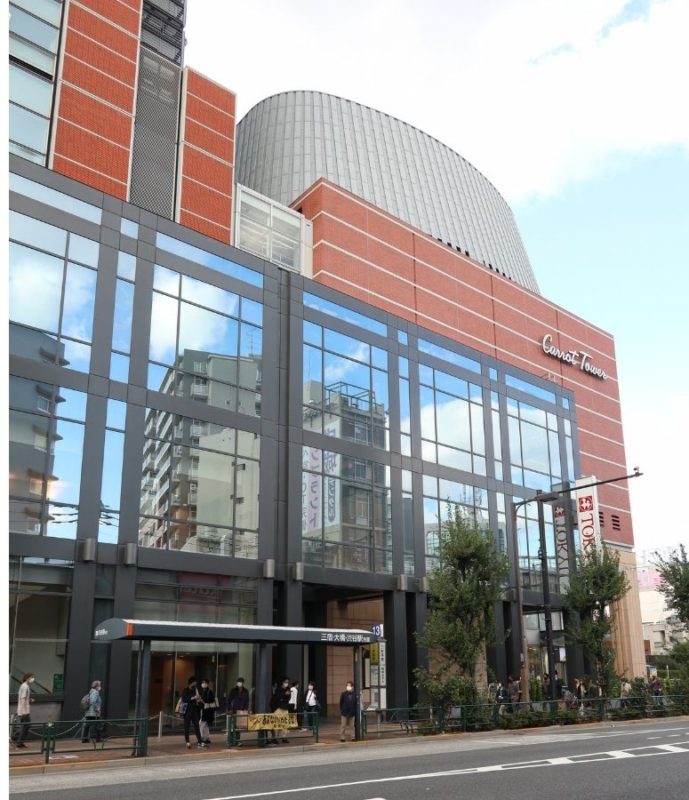
A short train ride away is Shimokitazawa, a hub for indie culture with eclectic shops, cafes, and eateries, ideal for those who love vintage finds and local cuisine. Additionally, if your visit coincides with the Boro-Ichi Market, it’s a must-see for traditional food and antiques. Nearby Hanegi Park offers a picturesque setting for outdoor activities and leisure, especially during the plum blossom season.
Gotokuji Temple hours: 6:00-17:00
Gotokuji Temple entrance fee: Free
How to get to Gotokuji Temple?
Nearest Station: Miyanosaka Station
(Tokyu Setagaya line)
Walk 5 min (350 m)
Gotokuji Station (Odakyu Line)
Walk 11 min (750 m)
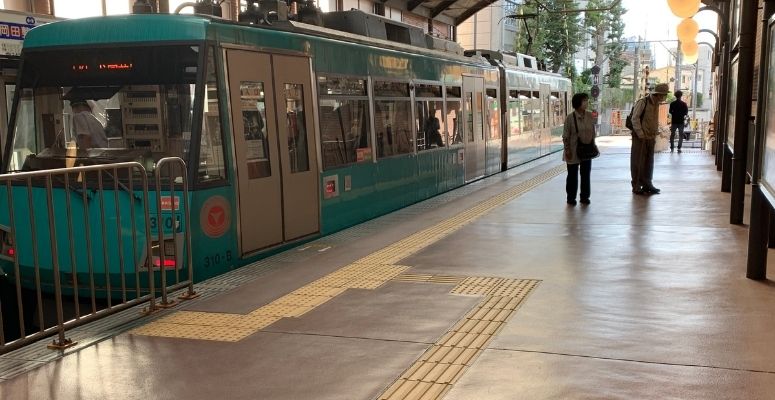
Shinjuku to Gotokuji Temple:
Take the Keio New Line (towards Hashimoto) to Shimo-takaido Station and change to Tokyu-Setagaya Line Local (towards Sangenjaya) to Miyanosaka Station and from there, Walk 350 m (5 minutes).
See Google Maps and Train Line here.
Shibuya to Gotokuji Temple:
Take the Den-en-toshi Line (towards Chuorinkan) to Sangenjaya Station and change to the Tokyu-Setagaya Line (towards Shimotakaido) to Miyanosaka Station and from there Walk 350 m (5 minutes).
See Google Maps and Train Line here.
Address:
2 Chome-24-7 Gotokuji, Setagaya City, Tokyo 154-0021
Official Website: Gotokuji Temple
Tel:+81-3-3426-1437
Book reasonable Hotels in Tokyo:
